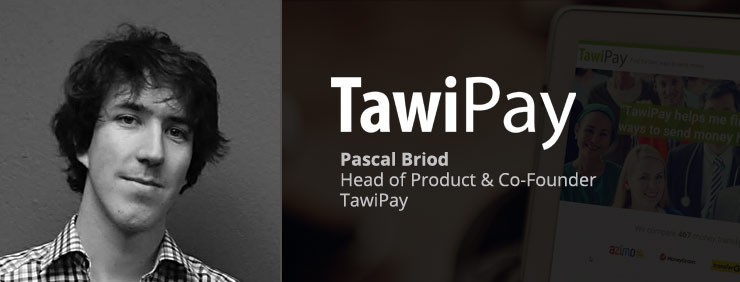If you’ve already had to send money to a foreign country, you’ll know it’s neither cheap nor easy.
Realizing that globally such fund transfers represent over 500 billions of dollars annually Pascal Briod was frustrated with the amount of money people lose on transfer fees. So he co-founded TawiPay,as an easy-to-use alternative for international money transfers.
We spoke with Pascal about the problem he’s been solving for 200 million migrants, feedback from frustrated customers as a way of validating product-market-fit, and the challenge of integrating user tests into the working process.
Tell us a bit about your background
I have been developing small websites since I was a teenager, but my academic background is in social sciences.
I studied Geography in Berlin, and then International Relations and Development Studies in Geneva.
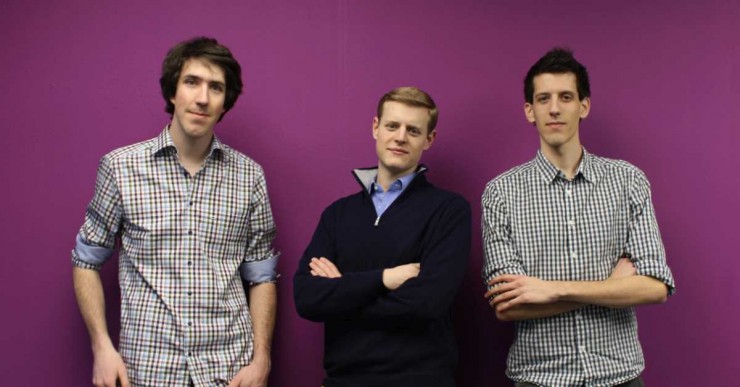
Pascal and his team
Before co-founding TawiPay with my brother and a friend, I worked for various NGOs, managing projects and developing products for the Global South.
What made you decide to start working on TawiPay?
As kids, with my brother and two cousins, we started a small non-profit to support a village in Cameroon. Fifteen years later we were frustrated with all the money we had lost over the years in transfer fees and bad exchange rates.
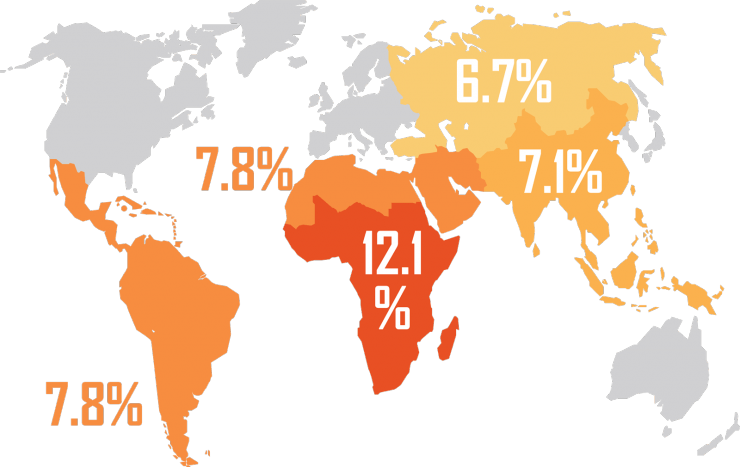
Average cost of sending money to different parts of the world
We realized that 200 million migrants over the globe were having the same problem each month when sending money back home to their families.
To empower them with the information they need to save on transfer fees, we decided to develop an easy-to-use and transparent comparison platform for international money transfer services.
How long did it take to put together TawiPay?
After three months, we released the very first version of our website. A few weeks later, we had received quite a lot of emails from frustrated users, who couldn’t find information for the countries they wanted to send money to.
It was a great validation that our product was answering a real need of the market.
“Lots of emails from frustrated users were a great validation for a real need of the market.“ Click To TweetWe continued to work on the website as a side project until my two co-founders finished their studies. We are working full-time on TawiPay since the summer 2014.
When it comes to user testing, how often are you testing your website with real people?
I am looking into our analytics, analyzing a heatmap, visioning a replay of a session on our website or answering a support question.
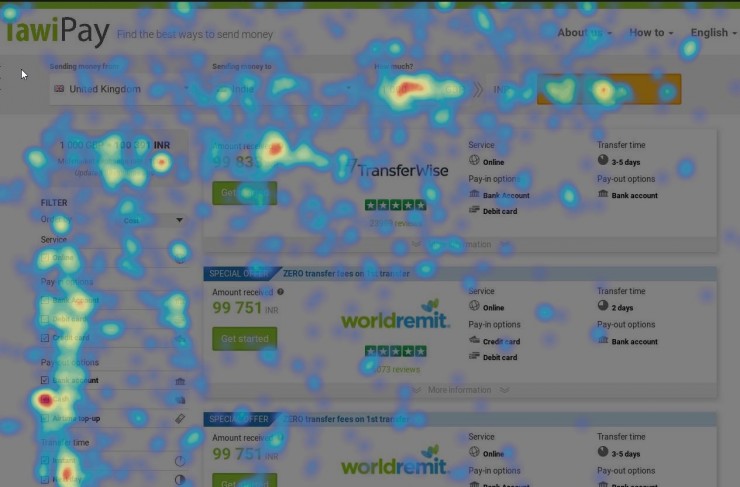
TawiPay uses Hotjar to capture quantitative data such as heatmaps
That way I’m always getting feedback from real people that are actually using my product, and I do that on a daily basis.
Of course, it is also very important for me to hear from people interacting with my product in front of me, or to watch a video of someone testing our website. Userbrain helps me do that on a weekly basis.
What’s the biggest advantage of watching people use your software, instead of just analyzing quantitative data?
Quantitative data is great to identify patterns in the way users interact with a product, or to assess the effects of product changes.
But it’s always difficult to interpret the reasons why users behave in one way or another.
“When you can hear what users are thinking, you don’t need to interpret that much.“ Click To TweetFor example, I can see in heatmaps of the comparison results pages, that a lot of users scroll to the bottom of the list of money transfer companies, but I don’t know exactly why.
If I can watch testers using my website, I can hear them say that they are scrolling down the list looking for a particular company.
When you can hear what user are thinking, you don’t need to interpret that much.
Can you remember your last “Oh shit” moment while watching someone using TawiPay?
After exploring our comparison results for a few seconds, the reflex of one of our first user tester was to open a new tab and look for the exchange rate on google.
This was an information that we already used to calculate the cost of the different options we listed on our pages, but we hadn’t thought of displaying it for our users.
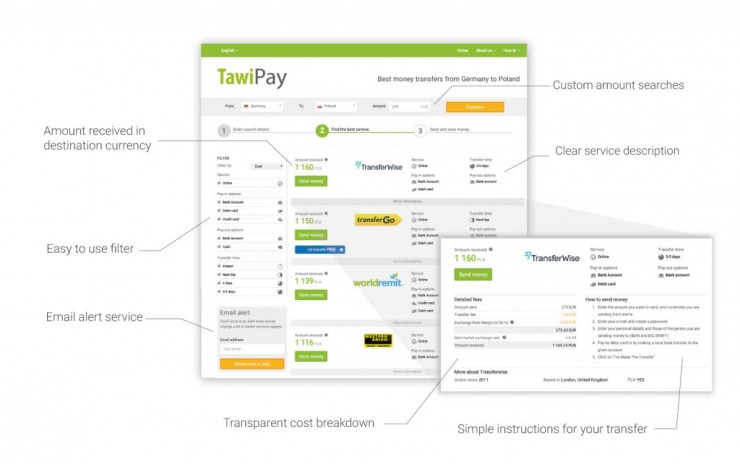
The old version of the TawiPay interface was missing the exchange rate
The exchange rate is now featured at the top of our results pages and is very helpful for many of our users.
How do you fit user testing into your working process?
In-person user testing sessions are difficult to organize, it’s complicated to recruit the right testers and to convince them to test your product.
I must admit that I often have a hard time to fit them into my working process.
“It’s complicated to recruit the right testers and to convince them to test your product.“ Click To TweetThe Userbrain video that I receive each week allows me to get continuous feedback on my product.
What is your biggest challenge at TawiPay?
The information we provide to our user is very complex, and it is a challenge to make it clear, accessible and very easy to understand for all our users, who come from very different background.
How do you maximize the value of the tests you do?
Each time I watch a video, I create a new item in Podio, the collaboration tool we use at TawiPay.
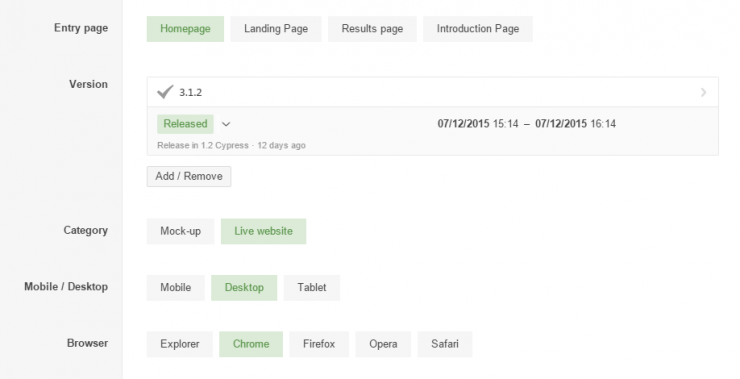
Example of an usability video tracked in Podio
I tag the video with the relevant information:
- version of our website
- landing page
- type of test
- type of device
I also summarize my observations and the main take-away of every video.
If the test helped me identify a bug on our website or pointed to something I could try to change in the mock-ups of the features I am currently prototyping, I will act on that directly.
On a regular basis, I will also go back through all my observations for a specific period or a specific segment of tests to identify patterns which help me define the next iterations of our product.
How do you feel you have grown from experience?
I am still at the beginning of my journey myself. Two years ago, I didn’t even know what UX or UI was.
One of the first thing I learned was not to jump to conclusions after the feedback of one single user. It was also important for me to realize that users generally don’t know what they want, or at least are not very good at describing it.
“I learned not to jump to conclusions after the feedback of one single user.“ Click To TweetMy role is not to implement what users say they want, but to understand what they truly need and to translate that in our product.
What are you reading/watching/listening to educate and inspire yourself every day?
I use Panda to easily browse through Product Hunt, Designer News, Dribbble and Hacker News.
I also use Feedly to get articles of several UX blogs through their RSS feeds. I also listen to some podcasts, like Product People or The Web Ahead.
About Pascal Briod
 Pascal is 27 years old and is living with his girlfriend Anna in Lausanne, Switzerland. He describes himself as a social entrepreneur, passionate about having a positive impact – even if it’s a small one – on the life of as many people as possible.
Pascal is 27 years old and is living with his girlfriend Anna in Lausanne, Switzerland. He describes himself as a social entrepreneur, passionate about having a positive impact – even if it’s a small one – on the life of as many people as possible.

